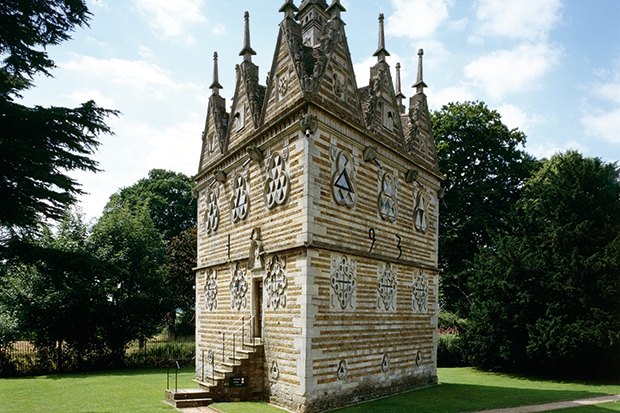No reliable statistics exist — it’s not the sort of thing you can audit — but England is surely the most haunted country on earth. And haunted not just by white ladies, ghosts, headless highwaymen, spooks and phantoms, but by a recurrent dream of Eden and other more recently lost pre-industrial worlds.
Thus follies and summer houses, Eden’s buildings, are among the nation’s most distinctive contributions to world architecture. They might be ‘fragile and neglected trivia’, according to Clough Williams-Ellis, but their ghosts remain and every garden centre pays tribute to a collective yearning for open-air theatricality, so that dreams dreamt in Shugborough might be replicated in Solihull.
If you had made a fortune from slaves or sugar, you would build yourself a country house with follies in the garden. There were certain preconditions besides wealth: idleness, wit and a taste for delicious melancholy. Additionally, the folly builder had to possess a sense of delight together with a tolerance of bold approximation in matters of commodity and firmness. But, most of all, he needed a belief in the evocative power of architecture — even of the sham sort.
At Painshill Park in Surrey, you find a Gothic Tower, a Gothic Temple, a Turkish Tent, a Chinese Bridge and a Crystal Grotto. One sight of the Tatton Sykes Memorial Tower at Sledmere in Yorkshire is enough to prompt a thesis on the strange, tormented psychology of the propertied classes. ‘Vain then are pyramids, and motto’d stones/ And monumental trophies raised on high!’ At least, according to John Cunningham in 1761.
The year 1953 was an annus mirabilis for folly studies. Barbara Jones published her Follies and Grottoes, still the best work on the subject, and it was reviewed in The Spectator by Williams-Ellis, no less, the Welsh architect whose own Mediterranean fantasy at Portmeirion, near Porthmadog, is a gelato-tinted, baroque-inflected folly in the grand manner.








Comments
Join the debate for just £1 a month
Be part of the conversation with other Spectator readers by getting your first three months for £3.
UNLOCK ACCESS Just £1 a monthAlready a subscriber? Log in